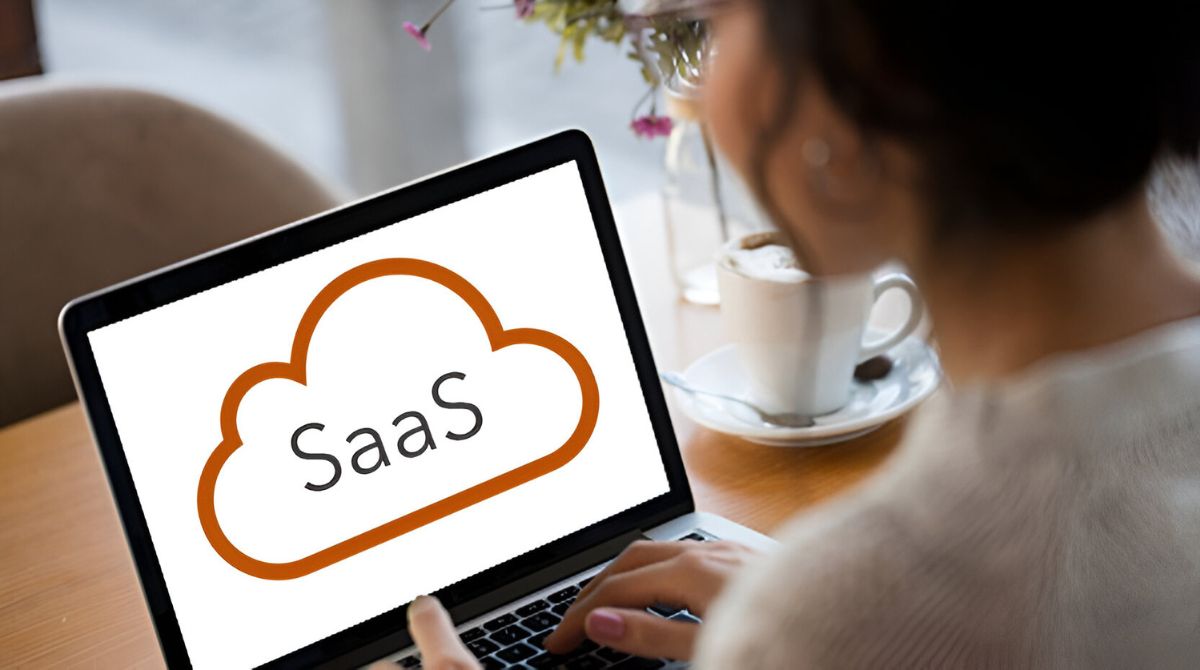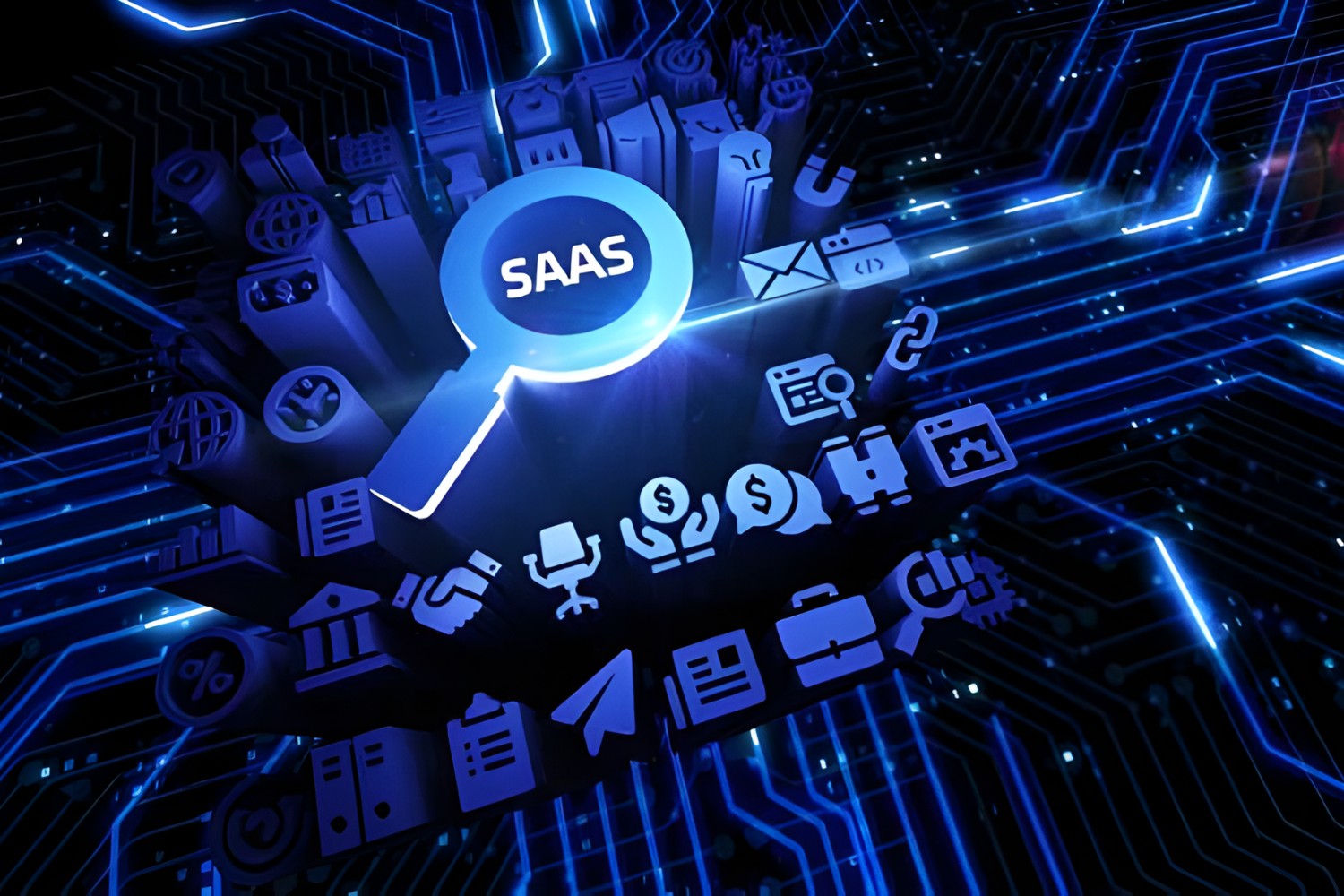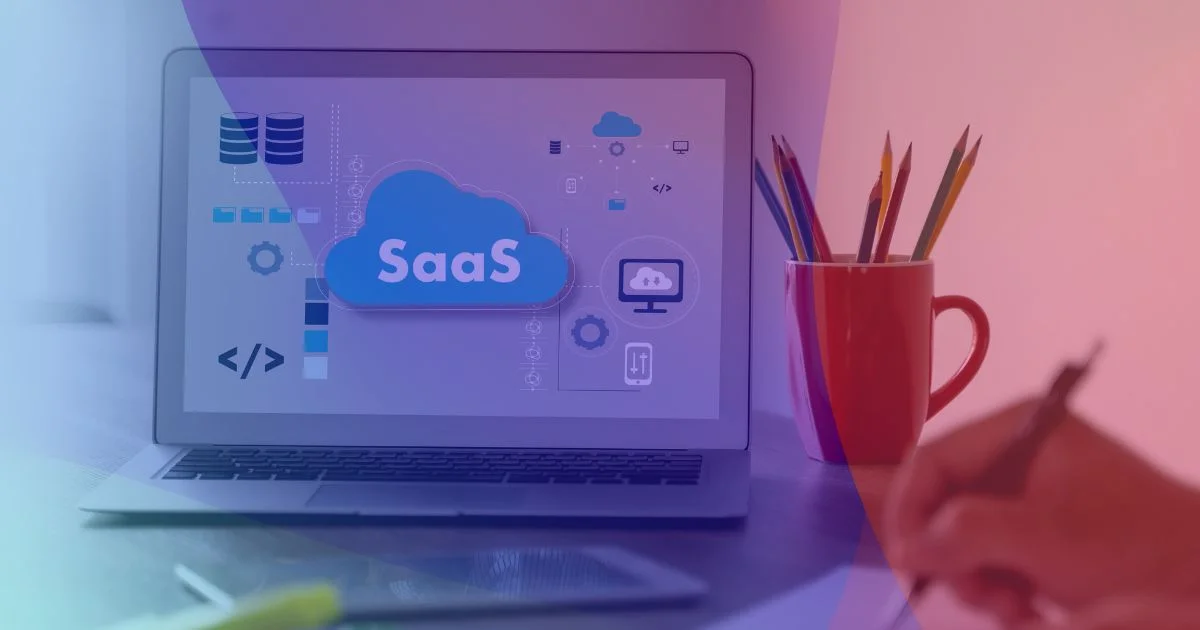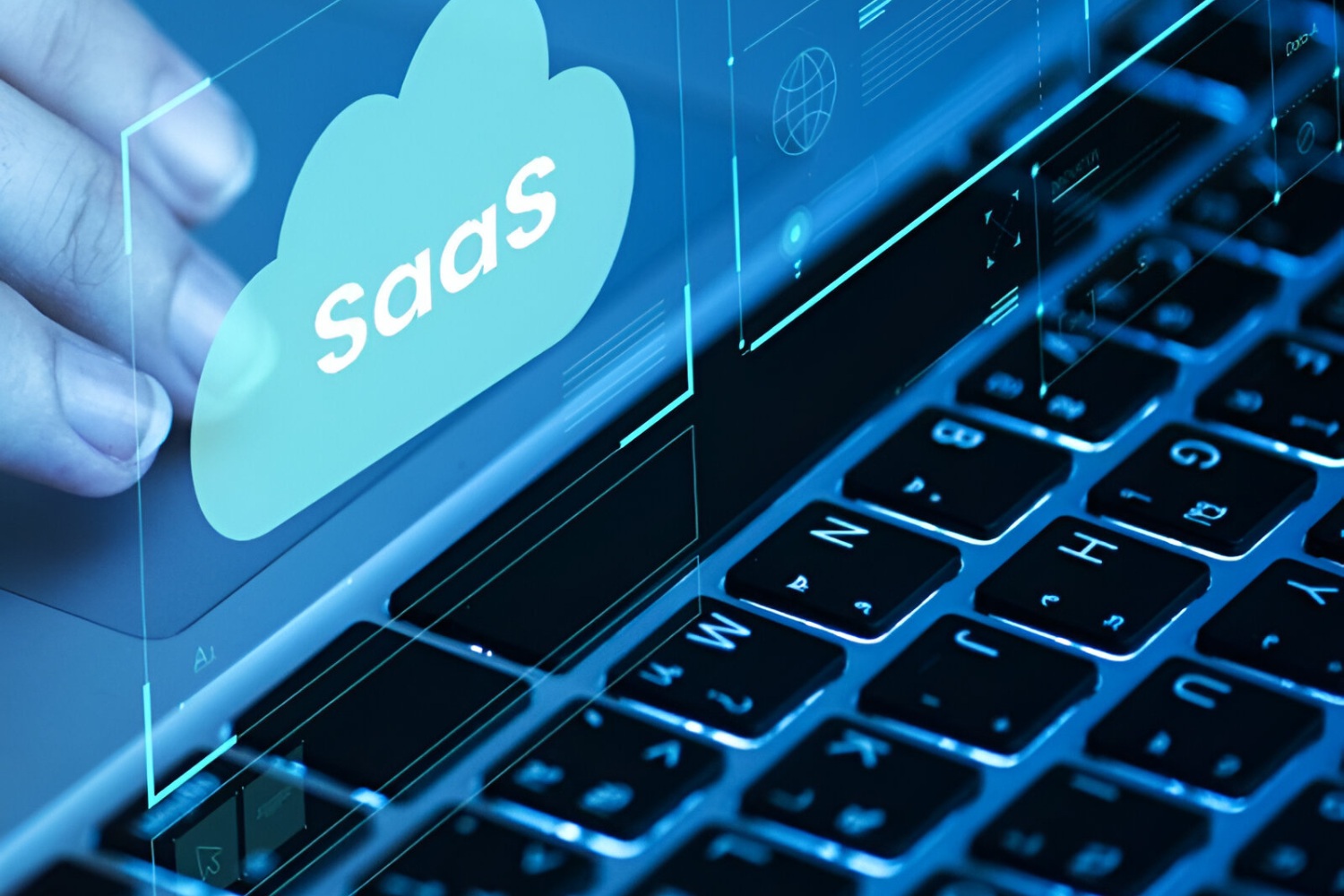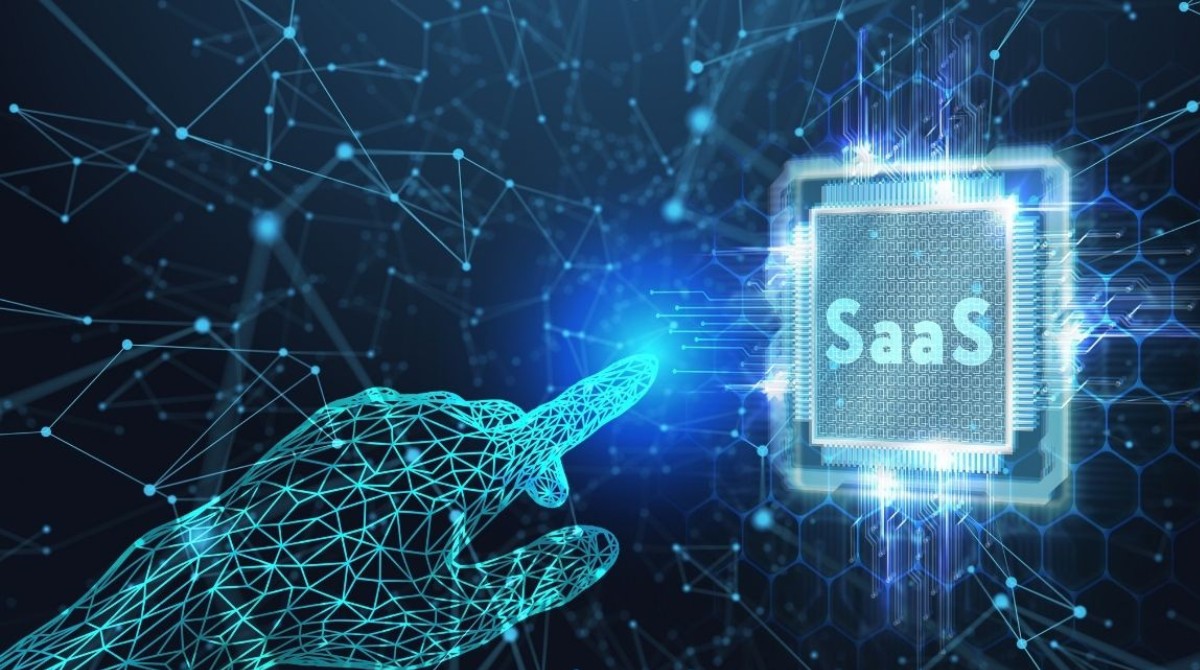Introduction
Welcome to the world of SaaS! In today’s tech-savvy era, SaaS has become an integral part of our digital landscape. But wait, what does SaaS stand for? SaaS stands for Software as a Service, which is a cloud computing model that provides access to software applications over the internet. Whether you realize it or not, you’ve likely already interacted with SaaS in your personal or professional life.
SaaS has revolutionized the way we access and use software. In the past, companies had to purchase and install software on their physical servers or individual computers. This approach was not only costly but also time-consuming, as it required maintenance, updates, and additional hardware. With the advent of SaaS, all these hassles have been eliminated, allowing businesses to focus on what matters most – their core operations.
So, what makes SaaS so appealing? One of the key advantages is its affordability. SaaS eliminates the need for upfront investments in software licenses or infrastructure, as users only pay a subscription fee based on their usage. This makes it particularly attractive for small to medium-sized businesses that may have limited budgets.
Additionally, SaaS offers unparalleled flexibility and scalability. Users can access their software applications anytime, anywhere, as long as they have an internet connection. This enables remote work and collaboration, which has become increasingly important in today’s globalized world. Moreover, SaaS providers are responsible for the software’s maintenance, updates, and security, freeing up valuable time for users to focus on their core business objectives.
In recent years, the SaaS market has seen tremendous growth, and countless companies have embraced this innovative model. From project management and customer relationship management (CRM) to human resources and e-commerce platforms, there’s a SaaS solution for almost every business need.
As we delve deeper into the world of SaaS, we will explore how it works, delve into its advantages and limitations, and examine key players in the market. We will also touch on important security considerations and highlight the differences between SaaS and other cloud computing models. By the end of this article, you will have a comprehensive understanding of SaaS and its significance in today’s digital landscape.
Definition of SaaS
Software as a Service (SaaS) is a cloud computing model that allows users to access and utilize software applications over the internet, without the need for local installation or management. In this model, the software is hosted and maintained by a third-party provider, who delivers it to users on a subscription basis.
With SaaS, users can access software applications through a web browser, eliminating the need for complex installations, frequent updates, and hardware maintenance. Users simply log in to their accounts and can immediately start using the software, regardless of their location or device. This convenience and accessibility have made SaaS a popular choice among businesses of all sizes and industries.
One of the distinguishing factors of SaaS is its multi-tenant architecture. This means that multiple users, or tenants, can share the same instance of the software on the provider’s infrastructure. Each tenant’s data is securely isolated, ensuring privacy and data integrity. This shared infrastructure allows providers to efficiently manage resources and offer cost-effective solutions to their customers.
SaaS offers a wide range of software applications across various industries and functional areas. From productivity tools like email and document editing to enterprise applications like customer relationship management (CRM) and supply chain management, SaaS covers a broad spectrum of business needs.
It is important to note that SaaS is not limited to business applications. Many popular consumer applications, such as streaming services, online storage, and social media platforms, operate on the SaaS model. These applications provide users with seamless experiences, allowing them to access their favorite content and services with ease.
Overall, the SaaS model provides numerous benefits to both users and providers. Users benefit from cost savings, increased flexibility, and reduced IT overhead. Providers benefit from economies of scale, continuous revenue streams, and the ability to offer ongoing support and updates to their customers.
In the next sections, we will explore the advantages of SaaS in more detail, delve into how it works, and examine some common examples of SaaS applications that you might be familiar with.
Advantages of SaaS
SaaS offers numerous advantages that have made it a preferred choice for businesses and individuals alike. Let’s explore some of the key benefits of adopting the SaaS model:
1. Cost-effectiveness: SaaS eliminates the need for upfront investments in software licenses and infrastructure. Users pay a subscription fee based on their usage, making it a cost-effective solution, especially for small to medium-sized businesses with limited budgets. Additionally, SaaS providers handle maintenance, updates, and security, reducing IT overhead and freeing up resources for other business priorities.
2. Accessibility and flexibility: With SaaS, users can access software applications anytime, anywhere, as long as they have an internet connection. This allows for remote work, collaboration, and increased productivity. Users can seamlessly switch between devices without the need for complex installations or data transfer. SaaS also enables easy integration with other applications and systems, providing a more seamless workflow.
3. Scalability: SaaS solutions are designed to scale effortlessly as a business grows or experiences fluctuations in demand. Users can easily add or remove user licenses, storage, or other resources without disrupting operations. This flexibility ensures that businesses can quickly adapt to changing needs and avoid excessive expenses or resource shortages.
4. Continuous updates and improvements: SaaS providers are responsible for software maintenance, updates, and security patches. This guarantees that users always have access to the latest version of the software, with bug fixes and new features. Unlike traditional software, where updates may require manual installations and disruptions, SaaS updates are seamless and transparent to the user.
5. Integration and interoperability: SaaS applications often offer APIs (Application Programming Interfaces) that allow for easy integration with other systems and applications. This enables users to streamline their workflows by connecting different software solutions and automating processes. The ability to seamlessly work with other tools enhances productivity and efficiency.
6. Enhanced collaboration: SaaS facilitates collaboration by allowing multiple users to work on the same software application simultaneously. Users can easily share files, collaborate on documents, and communicate within the software platform. This improves team collaboration, eliminates version control issues, and fosters real-time communication and cooperation.
7. Lower maintenance and support requirements: With SaaS, users can rely on the expertise of the providers for technical support, troubleshooting, and training. This reduces the burden on internal IT teams and ensures that users receive prompt assistance when needed. SaaS providers typically offer 24/7 support, ensuring that users can resolve issues quickly and minimize downtime.
SaaS offers a range of advantages that empower businesses to focus on their core competencies while leaving software management and infrastructure concerns to the experts. The flexibility, cost-effectiveness, and continuous improvements provided by SaaS make it a compelling option for businesses in today’s digital landscape.
Common Examples of SaaS
SaaS offers a wide range of software applications across various industries and functional areas. Here are some common examples of SaaS applications that you may be familiar with:
1. Customer Relationship Management (CRM) Software: CRM software, such as Salesforce, HubSpot, and Zoho CRM, helps businesses manage customer interactions, track leads, and streamline sales processes. These applications enable businesses to store customer data, track communication, and improve customer relationship management.
2. Collaboration and Productivity Tools: Applications like Microsoft Office 365, Google Workspace (formerly G Suite), and Slack fall into this category. These tools offer cloud-based document creation, online storage, email services, video conferencing, and team collaboration features. They enhance collaboration within teams and improve productivity by enabling seamless communication and resource sharing.
3. Project Management Software: Project management tools like Asana, Trello, and Basecamp assist businesses in planning, organizing, and managing projects. These applications offer features such as task management, team coordination, progress tracking, and file sharing, allowing teams to collaborate effectively and meet project deadlines.
4. Human Resources Management Systems (HRMS): HRMS software, such as BambooHR, Workday, and ADP, streamlines HR processes including employee onboarding, payroll management, benefits administration, and performance management. These applications automate HR tasks, improve data accuracy, and enhance employee engagement and satisfaction.
5. E-commerce Platforms: Popular e-commerce platforms like Shopify, WooCommerce, and BigCommerce operate on the SaaS model. These platforms enable businesses to set up and manage online stores, handle inventory, process payments, and track sales. SaaS e-commerce platforms provide businesses with an easy-to-use and scalable solution to sell products and services online.
6. Financial Management Software: SaaS financial management tools like QuickBooks, Xero, and FreshBooks help businesses manage their finances, handle accounting tasks, automate invoicing, track expenses, and generate financial reports. These applications simplify financial processes and improve accuracy, helping businesses keep track of their financial health.
7. Email Marketing Platforms: Email marketing software, such as Mailchimp, Constant Contact, and Sendinblue, allow businesses to create and automate email campaigns, manage subscriber lists, track email performance, and segment audiences based on demographics or user behavior. These platforms facilitate efficient and targeted email marketing efforts.
These are just a few examples of the vast array of SaaS applications available. The SaaS model has enabled countless software solutions to be delivered conveniently over the internet, providing businesses with agility, scalability, and cost-effectiveness in utilizing essential software applications.
How SaaS Works
The underlying infrastructure of SaaS involves a complex network of servers, databases, and software components. However, from a user’s perspective, accessing and utilizing a SaaS application is straightforward. Here’s a simplified explanation of how SaaS works:
1. Service Provider Infrastructure: SaaS providers have a robust infrastructure that includes servers, databases, networking equipment, and security measures. These components are responsible for hosting and delivering the software application to users.
2. Software Application: The actual software application resides on the service provider’s servers. It is typically designed to be multi-tenant, allowing multiple users to access and use the same instance of the software without interfering with each other’s data or settings.
3. User Interface: Users access the SaaS application through a user interface (UI) that is accessed via a web browser. The UI provides an intuitive and user-friendly environment for users to interact with the software’s features and functionalities.
4. Account Creation and Authentication: Users create accounts with the SaaS provider and log in using their unique credentials. This authentication process ensures that only authorized individuals can access the software and associated data.
5. Data Storage: User’s data is securely stored on the service provider’s servers. The data is typically encrypted and isolated from other users’ data, ensuring privacy and data integrity.
6. Data Processing: When users interact with the SaaS application, such as inputting data or executing commands, their actions are processed by the application’s backend on the provider’s servers. This may involve complex computations or database queries to perform the desired operations.
7. Application Response: After processing the user’s actions, the SaaS application generates a response, which is then delivered back to the user’s browser. This response may include updated data, reports, visualizations, or any other relevant information based on the user’s actions.
8. Ongoing Support and Updates: SaaS providers are responsible for maintaining the software application, applying updates, and addressing any technical issues or bugs. This ensures that users have access to the latest version of the software, with continuous improvements and enhancements.
9. Subscription Billing: SaaS applications are typically provided on a subscription basis. Users pay a recurring fee, either monthly or annually, based on their usage or the plan they have chosen. The subscription fee covers access to the software, ongoing support, and updates.
Overall, SaaS simplifies software access and usage by eliminating the need for complex installations and infrastructure management. Users can easily access the software application through a web browser on any device with an internet connection. The service provider takes care of the underlying infrastructure, maintenance, and updates, allowing users to focus on utilizing the software’s features to meet their specific needs.
Key Players in the SaaS Market
The SaaS market is filled with a diverse range of providers, each offering their own unique set of software solutions. Here are some key players that have established a strong presence in the SaaS market:
1. Salesforce: Salesforce is one of the pioneers of the SaaS model and is widely recognized for its customer relationship management (CRM) software. With a comprehensive suite of CRM tools and innovative features, Salesforce has become the industry leader in helping businesses manage their customer relationships.
2. Microsoft: Microsoft offers a variety of SaaS solutions through its Microsoft 365 suite, which includes popular software applications such as Microsoft Office, Teams, and SharePoint. Microsoft’s extensive portfolio caters to both individual users and businesses of all sizes, providing productivity and collaboration tools.
3. Google: Google’s SaaS offerings are anchored by Google Workspace (formerly known as G Suite), which provides a range of cloud-based productivity tools like Gmail, Google Docs, Sheets, and Drive. Google Workspace is highly regarded for its collaboration features and seamless integration with other Google services.
4. Adobe: Adobe specializes in creative and marketing software solutions. Its Creative Cloud suite, which includes applications like Photoshop, Illustrator, and InDesign, has become the industry standard for graphic design and digital media creation. Adobe also offers marketing automation and analytics tools for businesses.
5. Intuit: Intuit is well-known for its financial management solutions, particularly QuickBooks. QuickBooks is a widely adopted SaaS accounting software that helps small businesses manage their finances, handle invoicing, track expenses, and generate financial reports. Intuit also offers other related services like TurboTax for tax preparation.
6. Oracle: Oracle is a leading provider of enterprise software solutions, including its flagship product, Oracle Fusion Applications. Oracle offers a comprehensive suite of SaaS applications that cover various business functions, such as human resources, supply chain management, finance, and customer experience management.
7. Shopify: Shopify is a popular e-commerce platform that operates on the SaaS model. It enables businesses to set up and manage online stores, handle inventory, process payments, and track sales. Shopify provides a user-friendly interface and a range of customizable templates, making it accessible to businesses of all sizes.
8. Zoom: Zoom has rapidly gained popularity as a SaaS video conferencing and collaboration tool. With its easy-to-use interface, high-quality video and audio capabilities, and robust features, Zoom has become a go-to solution for remote meetings, webinars, and virtual events.
These are just a few examples of the key players in the SaaS market. However, the market is continuously evolving, with new entrants and innovative solutions emerging regularly. It’s important for businesses to explore and evaluate different providers to find the SaaS solutions that best meet their specific needs and requirements.
Security Considerations for SaaS
While SaaS offers numerous benefits, it’s important to be aware of the security considerations associated with adopting this cloud-based model. Here are some key factors to consider:
1. Data Protection: Data security is a critical aspect of SaaS. When selecting a SaaS provider, it’s crucial to ensure that they have robust security measures in place to protect your data. Look for providers that offer encryption for data at rest and in transit, as well as advanced authentication mechanisms to prevent unauthorized access.
2. Compliance and Regulations: Depending on your industry and geographic location, you may be subject to specific compliance requirements and regulations, such as HIPAA for healthcare or GDPR for the protection of personal data. Ensure that the SaaS provider you choose adheres to relevant compliance standards and can help you meet your legal obligations.
3. Vendor Security Practices: Assess the security practices of your SaaS vendor. Look for providers that undergo regular security audits, employ proactive threat monitoring, and have a dedicated security team to handle potential vulnerabilities. Additionally, review their incident response and disaster recovery plans to ensure they have robust measures in place to minimize service disruptions and data loss in the event of a security incident.
4. User Access Controls: Implement strong access controls within your organization to prevent unauthorized access to SaaS applications and sensitive data. These controls may include multifactor authentication, strong password policies, and role-based access permissions to ensure that users only have access to the necessary information for their roles.
5. Data Backup and Recovery: Ensure that the SaaS provider has robust data backup and recovery mechanisms in place. This ensures that your data is regularly backed up and can be restored in the event of data loss. It’s also important to test and validate the provider’s data recovery process to ensure its effectiveness.
6. Contractual Agreements: Pay close attention to the terms and conditions in the service agreement with your SaaS provider. Ensure that the contract includes provisions related to data ownership, data breaches, service level agreements (SLAs), and data portability. Verify that the provider has adequate liability and indemnification clauses to protect your organization in the event of security breaches or data loss.
7. Employee Awareness and Training: Educate your employees about best practices for data security when using SaaS applications. Train them on identifying phishing attempts, using strong passwords, and understanding data sharing and access control policies. Regularly reinforce the importance of security awareness to mitigate the risk of human error.
8. Regular Security Audits: Conduct regular security audits of your SaaS environment to identify vulnerabilities and address them promptly. Regularly monitor user activities, access logs, and system logs to detect any suspicious behavior or unauthorized access attempts.
By considering these security factors and taking proactive measures, businesses can minimize the risks associated with adopting SaaS and ensure the confidentiality, integrity, and availability of their data.
Differences between SaaS and Other Cloud Computing Models
While SaaS is a popular cloud computing model, it’s important to understand the key differences between SaaS and other cloud computing models, such as Infrastructure as a Service (IaaS) and Platform as a Service (PaaS). Here are the main distinctions:
1. Software Ownership and Management: In the SaaS model, the software is owned, hosted, and managed by the SaaS provider. Users access the software through a web browser and are not responsible for maintaining servers, infrastructure, or application updates. In contrast, IaaS provides users with virtualized infrastructure resources, allowing them to install and manage their own operating systems, applications, and software updates. PaaS offers a platform for users to develop, deploy, and manage their own applications, while the underlying infrastructure and runtime environment are handled by the PaaS provider.
2. Degree of Customization: SaaS applications are designed to be easily accessible and user-friendly, but may have limitations in terms of customization and extensibility. Users typically have limited control over the underlying infrastructure and software code. On the other hand, both IaaS and PaaS provide more flexibility and customization options. With IaaS, users have full control over their virtualized infrastructure, enabling them to configure and deploy applications as per their specific requirements. PaaS allows users to focus on application development and customization, leveraging pre-built tools and frameworks provided by the platform.
3. Scalability and Resource Management: SaaS applications are designed to be highly scalable, with the ability to handle a large number of users simultaneously. SaaS providers manage the allocation of resources and handle scaling behind the scenes, thereby ensuring optimal performance for users. In IaaS, users have more control over resource management and can scale up or down as needed, depending on their specific requirements. PaaS provides scalability at the application level, enabling users to leverage the platform’s automatic scaling capabilities based on demand and resource utilization.
4. Development Effort and Expertise Required: SaaS is typically the easiest cloud computing model to adopt, as it requires minimal technical expertise and development effort. Users can start using the software immediately without the need for extensive customization or coding. IaaS and PaaS, on the other hand, require more technical expertise and development effort. Users need to configure, manage, and secure the infrastructure or build and deploy their applications on the platform, respectively.
5. Cost Structure: SaaS operates on a subscription-based pricing model, where users pay a recurring fee for access to the software. The cost is typically based on the number of users or level of usage. In IaaS, users pay for the underlying infrastructure resources consumed, such as virtual machines, storage, and network bandwidth. PaaS offers a more complex pricing structure, which may include factors like resource usage, application performance, and additional services or features used.
6. Responsibility for Security and Compliance: With SaaS, the responsibility for security, data protection, and compliance lies primarily with the SaaS provider. They are responsible for implementing security measures, ensuring data privacy, and maintaining compliance with industry regulations. In IaaS and PaaS, users have more control and responsibility for implementing security measures, securing their applications, managing access controls, and ensuring compliance with applicable regulations.
Understanding these differences is essential for businesses to choose the right cloud computing model that aligns with their specific needs, technical expertise, customization requirements, and budgetary considerations.
Conclusion
SaaS, or Software as a Service, has revolutionized the way businesses and individuals access and utilize software applications. The advantages of SaaS, such as cost-effectiveness, accessibility, scalability, and continuous updates, have made it a popular choice in today’s digital landscape. From customer relationship management (CRM) to productivity tools, project management software to e-commerce platforms, SaaS applications cater to a wide range of business needs.
In this article, we explored the definition of SaaS and its key benefits. We discussed how SaaS works, highlighting the user-friendly interface, subscription-based pricing, and the convenience of accessing software applications over the internet. We also covered the security considerations that businesses should keep in mind when adopting SaaS, emphasizing data protection, compliance, and user access controls.
Furthermore, we explored the differences between SaaS and other cloud computing models, such as IaaS and PaaS, emphasizing factors like software ownership, customization, resource management, and cost structure.
As the SaaS market continues to grow and evolve, businesses must carefully evaluate their specific requirements when selecting SaaS providers. Factors such as data security measures, compliance adherence, vendor reputation, and contract terms should be taken into consideration.
SaaS has undoubtedly transformed the way software applications are accessed, providing businesses with greater flexibility, cost savings, and efficiency. By leveraging the power of SaaS, businesses can focus on their core operations while leaving software management, maintenance, and updates to the experts.
With the rapid advancements in technology and the increasing demand for cloud-based solutions, it’s clear that SaaS will continue to play a crucial role in the digital transformation journey of businesses across various industries.







